Turns out, my purchase was not such a bad one after all.
Botanical Name: Saururaceae Houttuynia cordata Thunb (Chameleon Plant) - ผักคาวทอง It is an Organic Herb
What are the Key Benefits:
- Inhibits the growth of harmful viruses
- Increases the antibodies to kill foreign objects
- Aids in healing urinary tract infections
- Reduces blood sugar level and cholesterol
- Used as treatment for colds
Family Saururaceae
Genus Houttuynia
Synonyms Polypara cochinchinensis - Lour.
Known Hazards: None known
Range E. Asia - China, Japan, Himalayas.
Habitat Shrubberies and damp places to 2400 metres in the Himalayas[51]. Often found as a weed in wet fields[187].
Edibility Rating 4 - (1-5) Medicinal Rating 3 (1-5)
Physical Characteristics
Perennial growing to 0.6m by 1m at a fast rate
It is hardy to zone 5 and is frost tender. It is in flower in June. The flowers are hermaphrodite (have both male and female organs)
The plant prefers light (sandy), medium (loamy) and heavy (clay) soils. The plant prefers acid, neutral and basic (alkaline) soils. It can grow in full shade (deep woodland) or semi-shade (light woodland). It requires moist or wet soil and can grow in water.
Habitats
Woodland Garden; Sunny Edge; Dappled Shade; Shady Edge; Ground Cover; Pond; Bog Garden;
Cultivars: (as above except)
'Chameleon' Deep Shade;
'Flore Plena' Deep Shade;
Edible Uses
Edible Parts: Fruit; Leaves; Root.
Tender young shoots and leaves - raw or cooked as a pot-herb [2, 61, 103, 183, 272]. The leaves and young shoots are harvested in the spring when about 8cm long [264]. Strongly aromatic according to one report[183] while others say that it is rather smelly and somewhat like rotten fish [105, 178]. Our experience is that the leaves have a delicious orange-like smell and make a marvelous flavoring in salads [K]. One report says that there are two distinct chemo types of this species. Plants from Japan have an orange scent, while those from China have a smell resembling coriander leaves (Coriandrum sativum)[238]. Some people seem to really like this leaf, others are indifferent to it or strongly dislike it. It also varies quite considerably according to the time of year. In the spring and summer it has a very acceptable flavor, but by autumn a distinct bitterness has crept in [K]. Root - cooked [177, 183]. Same comments on the smell as for the leaves [105]. Fruit [183]. No further details[K], but the fruit is a capsule that contains many small seeds[200].
Medicinal Uses
Plants for a Future can not take any responsibility for any adverse effects from the use of plants. Always seek advice from a professional before using a plant medicinally.
Antibacterial; Antidote; Anti-inflammatory; Antichloristic; Antiviral; Astringent; Depurative; Diuretic; Emmenagogue; Febrifuge; Hypoglycemic; Laxative; Ophthalmic; Women's complaints.
The whole plant is antibacterial, anti-inflammatory, and antimicrobial, antichloristic, and antiviral, depurative, diuretic, Emmenagogue, febrifuge, hypoglycemic, laxative and ophthalmic. A decoction is used internally in the treatment of many ailments including cancer, coughs, dysentery, enteritis and fever [218]. Its use is said to strengthen the immune system [176]. Externally, it is used in the treatment of snake bites and skin disorders [238]. The leaves and stems are harvested during the growing season and used fresh in decoctions [238]. The leaf juice is antidote and astringent [218]. A root extract is diuretic [218, 240]. The root is also said to be used in medicinal preparations for certain diseases of women [240, 243]. The rhizomes yield a sterol, resembling sit sterol, which stimulates the secretion of antibiotic substances from a gram-positive spore-forming bacillus [240]. An active substance, effective in the treatment of stomach ulcers, has been extracted from the plant [240].
Other Uses
Ground cover.
good ground cover plant [200]. Plants do not form a weed-suppressing cover [K]. A spreading plant, it should be spaced about 45cm apart each way [208].
Scented Plants
Leaves: Crushed - The bruised leaves emit a strong citrus smell rather like orange peel.
Cultivation details
Requires a moist to wet soil or shallow water, partial shade and a sheltered position [1, 31, 56, 238]. While it grows best in a bog garden, it will succeed in moist garden borders [233] and has also grown fairly well in a dry soil in Cornwall [K]. It succeeds in full shade [208]. Plants are hardy to about -15°c [187], the top growth is killed back by frost though the roots are much hardier. Even the roots, though, can be killed in severe winters [56]. A very ornamental plant, there are some named varieties [187]. 'Chameleon' has very attractively variegated leaves with the same flavor as the species [K]. The bruised leaves emit a strong citrus smell rather like orange peel [K]. Plants have a widely spreading root system and are very invasive, though they are easier to control in drier soils [200]. Creeps harmlessly between ferns [187]. Cultivated as a salad crop in Vietnam [103] and in W. China [187]. Plants seem to be immune to the predations of rabbits [233]. Plants growing in an area with a high rabbit population were not eaten by them although other plants growing nearby were attacked [K].
Propagation
Seed - sow spring in a greenhouse. Prick out the seedlings into individual pots as soon as they are large enough to handle and plant them out in the summer. Division in spring [31,56]. Very quick and easy, it can be done successfully at almost any time in the growing season [K]. Larger clumps can be replanted direct into their permanent positions, though it is best to pot up smaller clumps and grow them on in a cold frame until they are rooting well. Plant them out in the spring.
Cultivars
'Chameleon' - A very ornamental form with attractively variegated leaves [K]. These leaves have the same flavor as the species [K]. In full sun red is the dominant color, but in shady positions the leaves lose most of their redness and become green and yellow mainly [K].A vigorous form, though less so than the species.
'Flore Plena' - A double-flowered form, it grows very vigorously and can succeed in drier soils than most cultivars [K].
Links:
This plant is also mentioned in the following PFAF articles: Ground cover plants:
This is a rampant-growing herbaceous plant, though it dies right down in the winter. It succeeds in moist and wet soils as well as in shallow water. The leaves have a very strong scent of oranges and can be used in salads. Sometimes they have a pleasant flavour, at other times the same plants are not so pleasant. We are not sure of the reasons for this. There are a number of very ornamental forms with multi- coloured leaves.
The Woodland Edge Garden:
Houttuynia cordata. In a moist, or even a wet soil, the ORANGE PEEL PLANT will make a very good ground cover, though in drier soils its growth is too sparse to be effective. Growing about 60cm tall, when conditions permit the plant can spread very freely, forming clumps 1 metre or more wide. The plant produces small flowers in early summer, but the main reason it is grown in gardens is for its ornamental foliage. Several cultivars, such as 'Chameleon', have highly variegated green leaves splashed with red, white and yellow. As the common name suggests, the leaves of both the species and its cultivars have a delicious scent reminiscent of orange peel. The plant is cultivated in Vietnam as a flavouring in cooked foods and as a salad plant. We use it quite extensively as a minor ingredient of mixed salads where it adds a delightful tanginess.
Interesting Medicine made from this plant - please visit: Houttuynia cordata - Thunb
Ecology of Houttuynia Cordata
The Plants for a Future (2001) database offers a variety of edible and medicinal uses of this species. Leaves can be eaten raw or cooked. There are mixed reports about the aromatic properties ranging from smelling like rotten fish to the authors statement that, "Our experience is that the leaves have a delicious orange-like smell and make a marvelous flavouring in salads. The whole plant is antibacterial, antiphlogistic, depurative, diuretic, emmenagogue, febrifuge, laxative and ophthalmic. A decoction is used internally in the treatment of many ailments including cancer, coughs, dysentery, enteritis and fever. Its use is said to strengthen the immune system. Externally, it is used in the treatment of snakebites and skin disorders. The leaves and stems are harvested during the growing season and used fresh in decoctions. The leaf juice is antidote and astringent. A root extract is diuretic. The root is also said to be used in medicinal preparations for certain diseases of women. The rhizomes yield a sterol, resembling sitosterol, which stimulates the secretion of antibiotic substances from a gram-positive spore-forming bacillus. An active substance, effective in the treatment of stomach ulcers, has been extracted from the plant" (Plants for a Future, 2001).












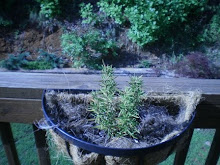
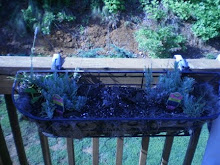
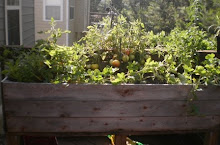
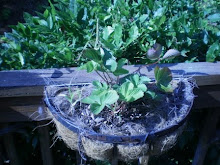
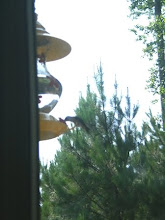









No comments:
Post a Comment